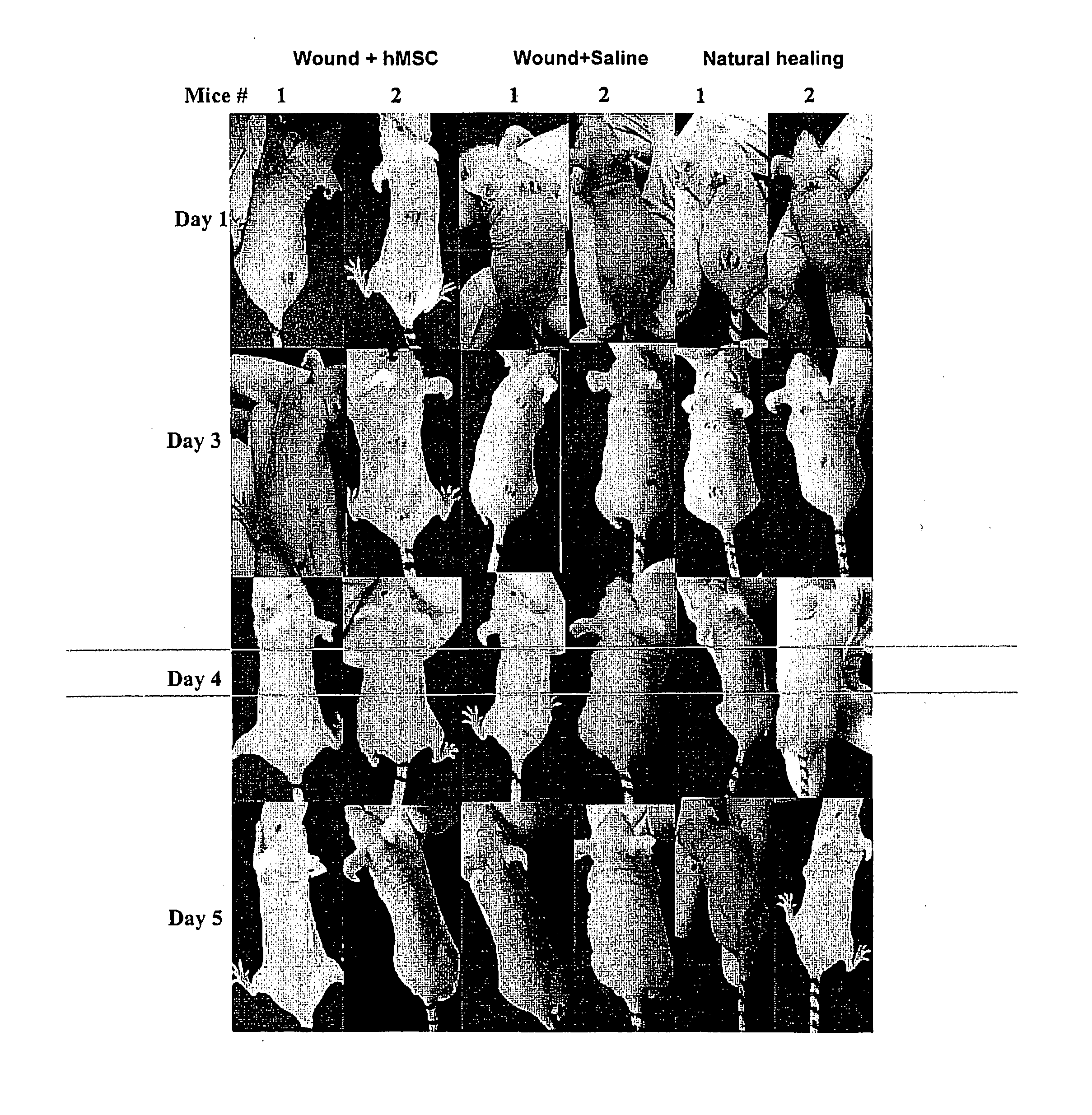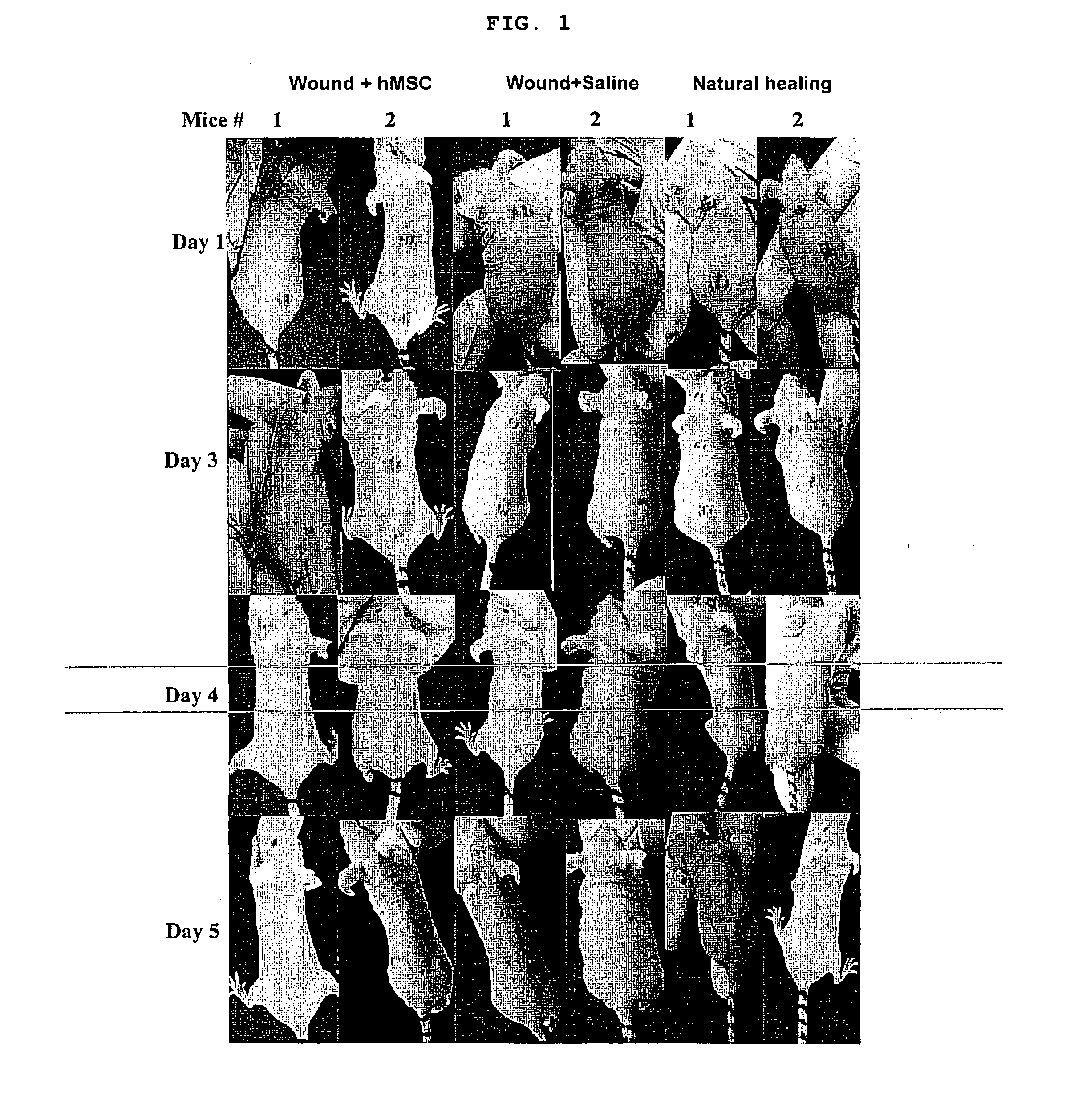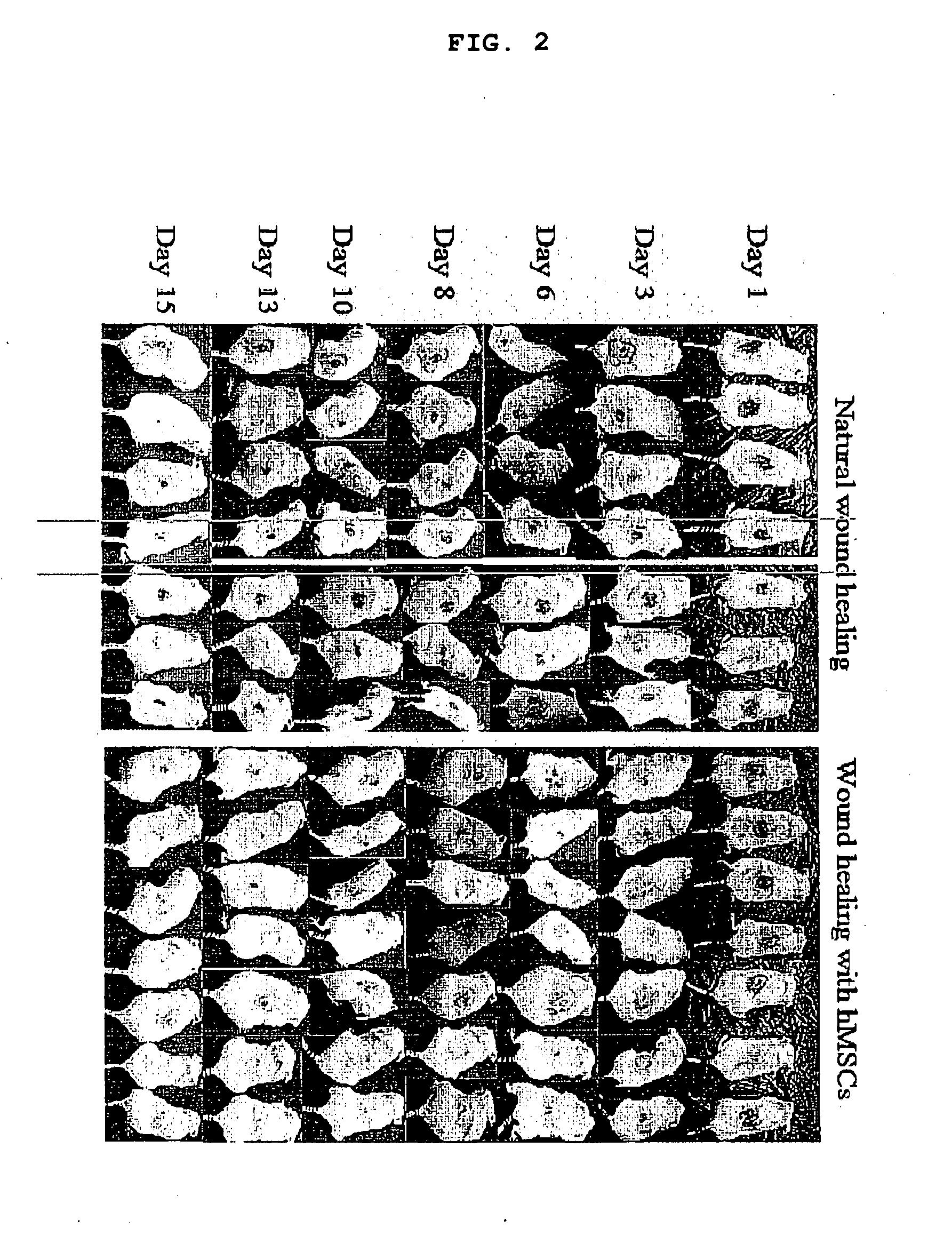Use of stem cells for wound healing
a technology of stem cells and wounds, applied in the field of stem cells for wound healing, can solve the problems of chronic wounds, acute and chronic wounds remain difficult to treat, and chronic wounds are difficult to heal, so as to accelerate the wound healing of normal and chronic wounds, minimize the formation of scar tissue, and optimize the effect of proliferation
- Summary
- Abstract
- Description
- Claims
- Application Information
AI Technical Summary
Benefits of technology
Problems solved by technology
Method used
Image
Examples
example 1
Materials and Methods
[0061]Human bone marrow was obtained commercially (Cambrex, Walkersville, Md.) and processed in the lab to isolate human mesenchymal stem cells using MesenCult basal media for MSCs with hMSC stimulatory suppliments and FBS for hMSCs (StemCell Technologies Inc. Vancouver, BC) and later expanded in minimal essential alpha medium (Invitrogen). The multipotency of isolated mesenchymal stem cells was confirmed by differentiating them into adipocytes (adipogenic induction medium containing insulin, dexamethasone and indomethacin), osteocytes (osteogenic induction medium containing dexamethasone, beta glycerophosphate, L-ascorbic acid) and myocytes (treated with 5-azacytidine for 24 hrs and cultured for 21 days). The mice (strain: nu / nu, gender: females, age: 4-5 weeks from Taconic farms, NY) were anesthetized and the skin surface was sterilized with alcohol wipes.
[0062]Two wounds (approximate area 0.7 cm) were made in the back of each mouse using a sterile needle (FIG...
example 2
Materials and Methods
[0070]Isolation of BMD-hMSCs and culture conditions—Unprocessed bone marrow (36×106 cells / ml) was purchased from Lonza (Walkersville, Md.). A Ficoll gradient was used for isolation of hMSCs and to eliminate unwanted cell types from bone marrow. Cells were then plated in T75 cm2 tissue culture flasks with Mesencult media containing hMSC stimulatory supplements and fetal bovine serum (FBS) for hMSCs. Once cultures were established, several clones were isolated and expanded in culture in the same medium. Established cultures were grown in minimum essential media (α-MEM) containing 10% FBS and penicillin / streptomycin. The cultures were incubated at 37° C. in a humidified atmosphere containing 5% CO2. Cells were subcultured every 4 to 5 days and aliquots from passage 2 to 8 were frozen in liquid nitrogen for use. Cell surface markers expressed on these cells were determined by flow cytometry using FITC labeled Abs (BD Biosciences, San Jose, Calif.) and include Strol,...
PUM
 Login to View More
Login to View More Abstract
Description
Claims
Application Information
 Login to View More
Login to View More - R&D
- Intellectual Property
- Life Sciences
- Materials
- Tech Scout
- Unparalleled Data Quality
- Higher Quality Content
- 60% Fewer Hallucinations
Browse by: Latest US Patents, China's latest patents, Technical Efficacy Thesaurus, Application Domain, Technology Topic, Popular Technical Reports.
© 2025 PatSnap. All rights reserved.Legal|Privacy policy|Modern Slavery Act Transparency Statement|Sitemap|About US| Contact US: help@patsnap.com



